BiSaddle ShapeShifter Review
This is a saddle review, so I should start with the usual disclaimers:
1. Saddles are a highly individual choice.
2. I’m not you, and you’re not me. Therefore, what I prefer may not be what you prefer.
3. Sometimes you just have to try two or three different widths to find out what you like.
Wait a minute. If this saddle does what they say it does, I might just have to stop making disclaimers.
The concept is this: humans prefer different saddle widths and shapes. We all have differences in our posture, sit bone width, flexibility, body composition, etc. The usual way to select a saddle is to read reviews, study websites, consider our own unique preferences, and then start the process of buying saddle after saddle until we find the right one. My personal history lines up with this, and I tried at least a dozen saddles before I started writing for Slowtwitch and reviewing saddles in 2012.
BiSaddle is a Utah-based company, and they’ve taken a unique approach the common and expensive problem of choosing a saddle. Rather than selling a bunch of different widths and shapes, they make one saddle with adjustable width and shape. There are other adjustable saddles out there, such as the Bontrager Hilo RXL triathlon saddle. However, that saddle only has an adjustable front width, and it doesn’t adjust very far. BiSaddle says that their patented saddle is the only one with independent adjustment in both the front and rear. Also, it’s the only saddle I’m aware of that makes it possible to manipulate the profile (a.k.a. how round or flat the saddle is from left-to-right).
As pictured below, adjustment is made possible by four titanium bolts on the bottom of the saddle:
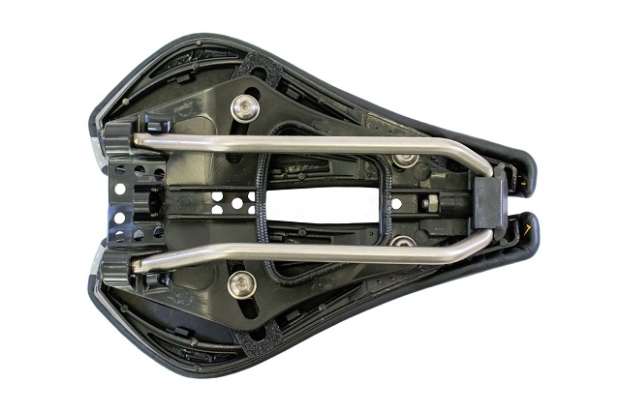
Above image ©BiSaddle
Their specifications list that the front has a width range of 40-75mm, and the rear a range of 130-185mm. Try as I might, the widest I could adjust the saddle was 60mm front and 170mm rear, though I doubt many would need to go beyond this.
I do need to introduce an asterisk to the specs, specific to those folks seeking a very wide saddle. If you want max out the rear saddle width, it begins to push the front of the saddle closer together. The opposite is also true – maxing out the front starts to bring the rear closer together. In other words – you cannot have both the front and rear at their max width simultaneously. See the image below for illustration.
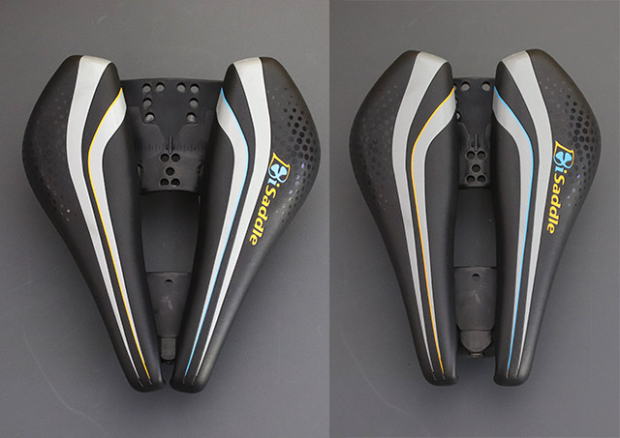
For example, if I max out the rear at 170mm, the widest possible front width measures 52mm. If I max out the front at 60mm, the rear width tops out at 153mm. Again, I don’t see this as an issue for many, but it could be worth considering if you have width requirements that are out of the ordinary.
The overall length of the ShapeShifter is quite short, at 200mm. For all the serious time trialists out there, that means that the ShapeShifter is not UCI legal. Note that part of the reason for the short length is that the ShapeShifter falls into the category of nose-less saddles, along with the ISM, Dash, the Fizik Tritone, the Cobb Fifty Five, and a few others. While these saddles are so popular as to require little explanation in 2018, the CliffsNotes are that the saddle nose is typically the root of bike-seat-related health issues – due to the pressure exerted on the perineum for both men and women. These issues tend to be exaggerated for triathletes and time trialists because a forward-rotated body position (i.e. while using aero bars) pushes the perineum down even further onto the saddle nose than a standard road position.
Removing the saddle nose can help to alleviate this issue, but reduces the overall length of the saddle. In order to stay above the UCI’s minimum saddle length of 240mm, some manufacturers add extra material to the rear of the saddle – an area you’re never intended to sit on – that functions solely as a loophole for the length requirement. The ShapeShifter does not take this route, instead opting for a shorter length and avoiding the added weight of additional material.
While we’re on the topic of saddle-related health issues, BiSaddle discusses this in their catalog and on their website, making claims such as “no pressure on soft tissue,” and “experience unimpeded sexual potency, and alleviate or prevent erectile dysfunction.”
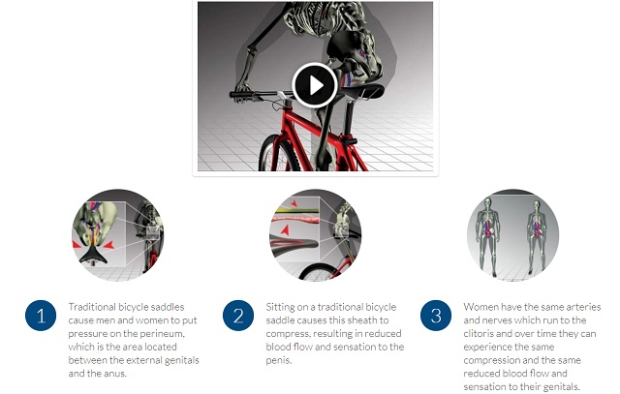
While I didn’t personally experience numbness or discomfort with the saddle, I would like to see more information to support the claims, such as blood flow data, pressure mapping charts, or inclusion in peer-reviewed studies. It also strikes me that, due to the adjustable design, it is unlikely that the saddle performs equally well from a blood flow and health perspective for a given person at ALL settings of width adjustment. The test data I’ve seen from various manufacturers and studies generally concludes that genital blood flow improves with wide, flat, noseless saddles featuring a large cutout. I mention this because if you ride the ShapeShifter and experience any numbness, you might need to adjust it wider, especially towards the front end.
The good news is that if the saddle ends up falling short of your expectations, they have a 90 day refund window (which is on the generous side compared to most other brands).
Shape Adjustment
In addition to the adjustable width, the ShapeShifter has the unique ability to change the shape of its profile. The easiest way to think about this is by looking at the seat from dead-on-front. When your eyes follow a saddle’s left-to-right profile, how flat is it? Some saddles are very flat. Some are very curved.
In its stock form, the ShapeShifter is on the flatter end of the spectrum. If you’d like to change this shape, BiSaddle includes two sets of angled wedges – one set that flattens the saddle further, and one set that makes it more rounded.

Above image ©BiSaddle
To install the wedges, you must remove the bottom bolts entirely, and sandwich the wedges between the saddle base and top seating pads:
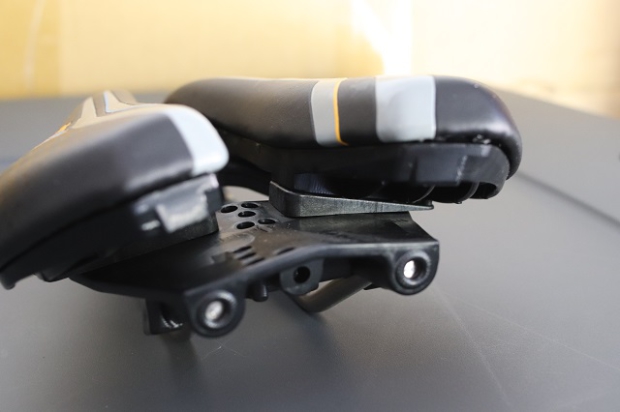
The image below shows how the profile changes with all three settings – flattening wedges, no wedges, and rounding wedges:
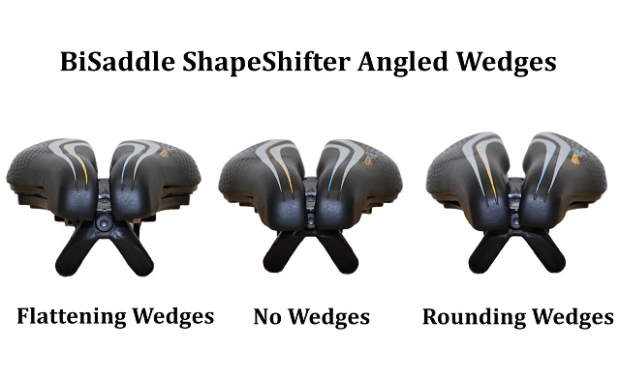
Above image ©BiSaddle
I tried both sets of wedges, and they affected the saddle about how I expected. In short, I find that people with good flexibility are happy on flatter saddles, while people who lack flexibility are happy on more rounded saddles. I fall in to the latter group, and prefer the ShapeShifter when used with the rounding wedges. To me, it makes the saddle feel a bit friendlier, like I have a smoother transition between the saddle top and my body.
Living with the ShapeShifter
While I always hesitate to give firm recommendations on saddles, I wanted to report on some of the day-to-day with this unique saddle. How do you decide what width you need? Is it difficult to adjust? Does it hold its adjustment? Is it heavy? Does it feel weird, or is it similar to other saddles?
I’ll start with the low-hanging fruit. First, it feels like a noseless bike seat. If you’ve tried a Dash, ISM, Cobb, Specialized Sitero, or similar saddle, the BiSaddle will feel very familiar to you. These saddles are all generally flat in profile, short in overall length, and feature padding that’s firm. At a quoted weight of 350 grams, the ShapeShifter certainly isn’t the lightest out there, but definitely not the heaviest in this category, with some competitors at or near the 400 gram mark.
The adjustment process of the saddle is quite easy – just loosen the four bottom bolts, move the seating pads where you need them, and tighten the bolts again. The original test sample I had used super-fancy titanium bolts that were drilled out to save weight. The only problem was that the extra drillings opened up too much space in the bolt head, causing the ball end of my 5mm allen wrench to slip periodically. Since that time, BiSaddle updated to a more standard titanium bolt with 4mm allen head, which has been much easier to adjust:
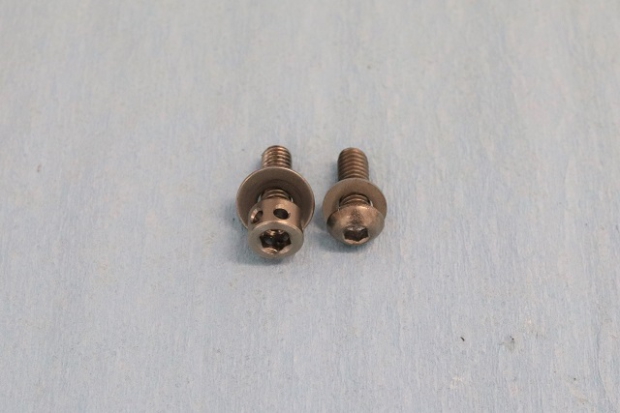
They also include a “stubby” 4mm allen wrench, making it easy to slip in under the saddle rails.
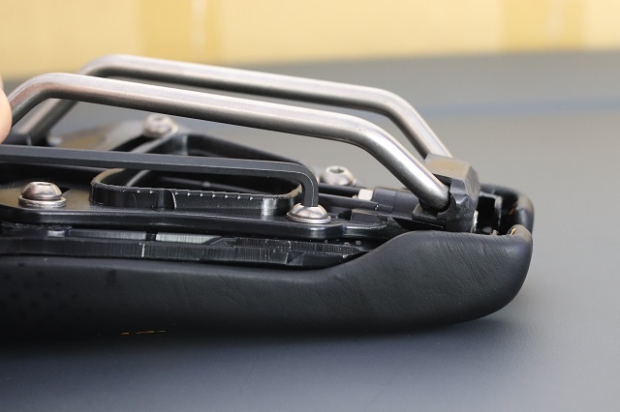
I found it a little tedious to adjust the width perfectly, but that’s partially because I’m a perfectionist about bike fit. There are markings on the saddle base to help guide you, so just take your time and check it twice. All in all, it’s no more difficult to adjust than an aerobar pad or stem clamp. If you’re allergic to turning your own wrenches or mechanically challenged, I advise enlisting the help of your local bike fitter.
The real question is: how do you go about deciding on a proper width?
This will be easier for those of you with a lot of saddle experience, because you already know what you prefer. Say you’ve ridden on Saddle X for years and been generally happy, but wished the front end was 5mm narrower. Or perhaps you wanted the rear to be 10mm wider. Whatever the case may be, the ShapeShifter allows you to start from a width that you know is at least in the ballpark and adjust accordingly. Using this method, I got the saddle setup about 90% correct on the first try, with only minor adjustments necessary.
If you’re new to cycling and don’t know what you need, BiSaddle suggests that you use your sit bone width to establish a starting point of rear saddle width. If your sit bones measure 130mm, they suggest adding about 20mm to the saddle width to ensure full sit bone support (150mm total). For the front of the saddle, their representatives suggested making it as wide as possible without causing thigh irritation. In other words – go wide until you feel some rubbing, and then back it off a little.
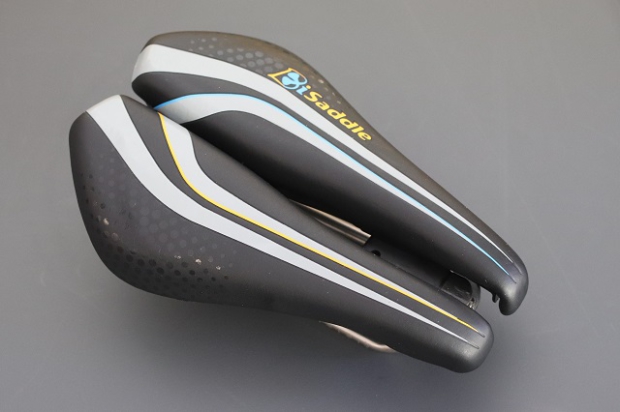
As far as holding its adjustment over time, so far I have experienced zero slippage while using the saddle on and off for about five months. The titanium bolts have a special thread locking compound applied to them, and they advise against using off-the-shelf Loctite. The practical mechanic in me suggests checking the bolt tightness every 3-6 months, or right around the time you check all of your other critical bolts – seatpost clamp, stem, aerobars, etc. If you NEVER check these bolts, I hope that my wagging finger of shame provides sufficient motivation for you to run out to the garage immediately.
Another cool feature of the BiSaddle – that I didn’t think of initially- is that you can adjust it asymmetrically. If you have a leg length discrepancy, hip problem, injury, or any other anomaly, this saddle can potentially accommodate you unlike anything else. Perhaps this is the ideal saddle for para athletes, amputees, or anyone else needing asymmetrical support.
Riding and Impressions
As mentioned, I used the ShapeShifter in rotation with a couple other saddles for a period of five months. I used it on my triathlon bike, a road bike, and even a mountain bike. I used many width configurations and both sets of angled wedges.
My verdict? The ShapeShifter works. Compared to other noseless saddles I’ve used, I really appreciate the ability to fine-tune the saddle to get it exactly how I want it, plus the angled wedges add an extra dimension not found on other saddles. This is the type of saddle I wish existed when I started cycling, as it would have made my early years of random saddle purchases much easier and less expensive. The ShapeShifter isn’t cheap at $299, but it’s not out of the ballpark compared to the competition (and it’s certainly cheaper than buying two or three other saddles). Also, all of the component parts are replaceable. When the saddle padding inevitably starts to break down and compress over time, you can replace the top pads for much less than the cost of an entire saddle. BiSaddle representatives also told me that they’re looking into offering a cheaper version with steel rails and bolts in the future.
I did have one problem with the first version of the ShapeShifter that I received: my legs tended to rub the saddle rails from time to time. The rails were joined at the front by a wide bracket, which could actually be wider than the seating pads if adjusted to be narrow. They since sent a 2019 version of the saddle to me, with a revised rail design that eliminated the problem for (see image below).
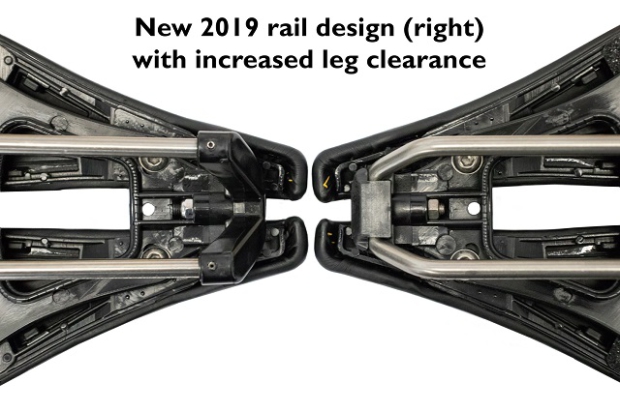
Above image ©BiSaddle
The only feature I wish the saddle had is adjustable padding. That’s the final X-factor in saddle comfort, which is very hard to predict. Some people love firm saddles with no padding at all. Some people, myself included, prefer a seat with more padding. As it stands, the ShapeShifter is right on the edge of what I prefer in terms of padding softness. I think I’d like it to be a little softer – but they don’t offer it, so I don’t really know. It seems possible that they could offer more than one padding option, but then they’re getting more into the realm of selling a modular saddle system, where you would build a saddle from scratch based on your budget and preferences (“I want ti rails, steel bolts, medium padding, and flattening wedges”).
2019 Preview
BiSaddle has some new stuff coming for 2019. First and foremost, customer feedback and those pesky UCI regulations nudged BiSaddle to develop a longer, UCI-legal model. It doesn’t have a name yet, but this prototype was shown at Interbike 2018:

Above image ©BiSaddle
BiSaddle also showed a prototype full-carbon version of the saddle, which they say is made right alongside their other products in their Utah factory. It has a carbon base, carbon rails, and an estimated 90 gram weight savings (price TBD):
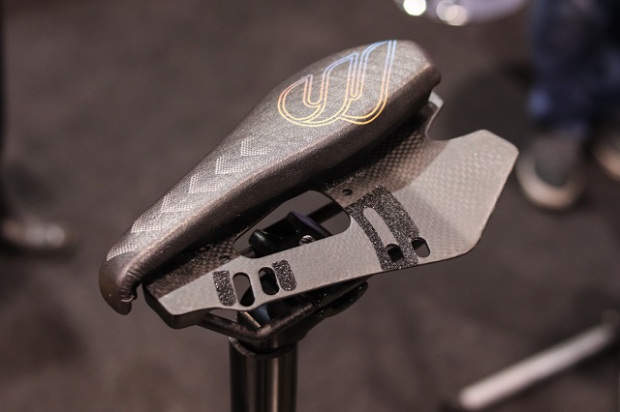
Above image ©BiSaddle


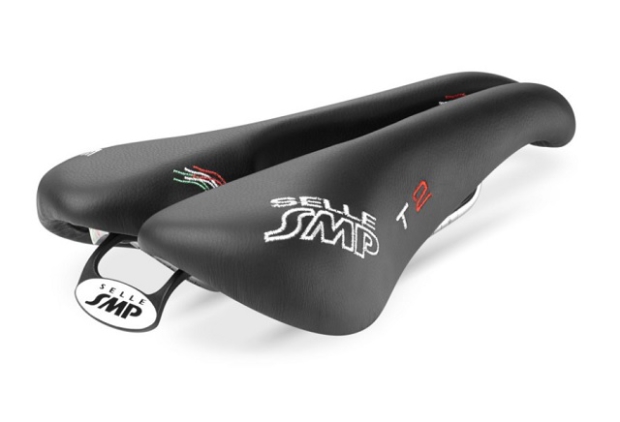
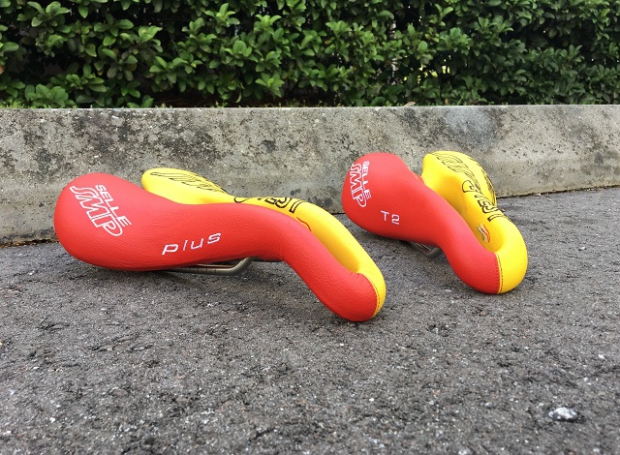

Start the discussion at slowtwitch.northend.network